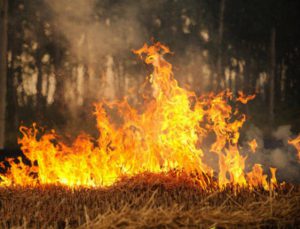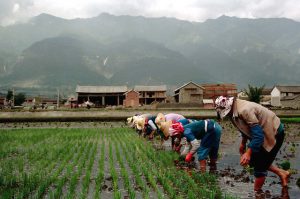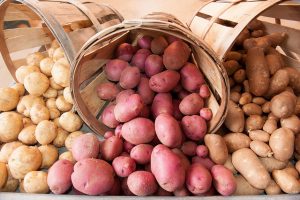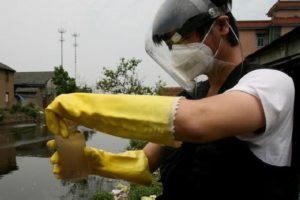Studying the role climate change plays in farmers’ income fluctuations has found no big impact, so technological farming, land consolidation and improved market information can all help farmers to mitigate financial risks from global warming, argues Wang Jinxia, deputy chair of the Centre for Chinese Agricultural Policy at the Chinese Academy of Science.
Chinadialogue (CD): How big will the overall effect of cllmate change on the agricultural economy be?
Using 30 years of historical data, our research found climatic change accounted for only about 2%-3% of fluctuations in agricultural incomes.
As for the impact of climate change on the agricultural economy, there are two things to look at: agricultural output, and the market.
Agricultural output is linked to climate change, but as described above the effect is quite small. Of course, you get different results in different scenarios and different models. For example the United Nations Intergovernmental Panel on Climate Change (IPCC) report estimates a 20%-30% reduction in output. Their calculation comes from climate and crop models, but we used an economic model.
Generally, simulations using economic models find smaller impacts than those with climate models.
Since agriculture began, farming has always been molded by changes in climate. Farmers have always adjusted to local variations by changing the amount of planting or fetiliser used.
Also, globalized markets will also acts as a buffer zone, evening out price fluctuations in specific locations.
CD: What will climate change mean for farmers, especially in already water-scarce north China where rising temperatures will shift grain-growing north. What should be done about water resources there?
Wang: Overall, we found agricultural incomes in south China are more sensitive to changes in precipitation, while in the north they are sensitive to both temperature and precipitation.
More irrigation will help the north of China deal with the drier conditions caused by climate warming.
To improve water use, first, improve infrastructure construction. The north’s infrastructure is already old. Even when water is available it may not be used well. Second, popularize genuinely valuable technologies. Sprinkler and drip irrigation are not really suitable for much farmland – they work well on high-profit, large-scale crops, but are too expensive for ordinary crops such as wheat, or on small fields. Farmers often have to figure out their own low-cost solutions for small fields, which is a cost in itself.
Also, market factors need to be considered. The northward movement of crops initially suggests an expansion of the extent of some crops planted in the south. But climate is only one factor: market prices are key to what gets planted. If a certain crop isn’t suitable for planting at high latitudes, but later becomes suitable through improved strains, then the technology is in place to make the shift if prices increase. So a big issue currently is how to guide technology to reduce the impact of climate change on agriculture.
CD: Planting is adjusted according to market conditions. Is it possible that copycat planting will run out of control, aggravating water scarcity and waste? What should the government do?
Wang: Individual farmers don’t worry much about environmental issues. For example when rice from Hunan falls in price, while rice from the north-east goes up, there’s more profit in rice-growing in the north-east. Even if the north-east is short of water, farmers will create more paddy fields.
But they need the government to allow this, so policy-making can provide restrictions and guidance.
Guidance isn’t about telling farmers what to plant, so much as improving how the market operates. There’s plenty of hard and soft market infrastructure that needs improving, such as information exchanges and market management systems. What the government needs to do is to enable the swift flow of market information and resources, so farmers can make judgments about prices, and goods can move easily.
China has many small-scale farmers, and if they can get a good price for a certain crop they’ll plant it, regardless of whether they’re allowed to or not. If market information infrastructure lags behind, then farmers don’t know what anyone else planting, creates a risk of unexpected losses. Those losses may be small for each farmer, but added up across huge numbers of small farmers they become economically significant.
Large-scale operations are more professional and are more able to invest and build infrastructure, and they pay more attention to market information, so combining land lessens risk.
Overall, farmers need to guard against market risk first. Climate change comes second.







